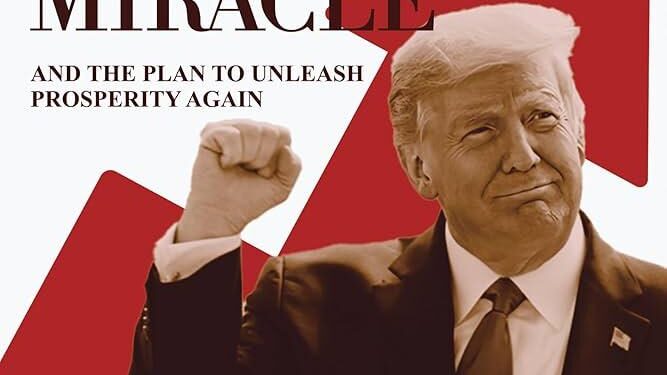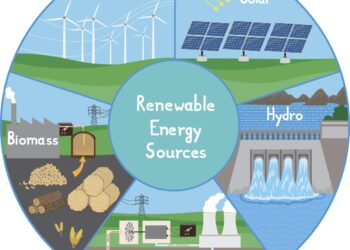As the nation edges closer to the next election cycle, the economic record of former President Donald Trump has come under intense scrutiny. Recent election outcomes paint a stark portrait of public dissatisfaction, signaling that the economic conditions associated with Trump’s tenure are being judged harshly by voters across the country. In this commentary, we analyze how the election results from various states and districts reflect growing concerns about the economy during and after Trump’s administration-indicating that for many Americans, the economic challenges are not only significant but worsening.
Economic Indicators Reveal Sharp Decline Under Trump Administration
Economic metrics during the Trump administration have shown troubling signs of decline across multiple sectors. Key indicators such as consumer confidence, manufacturing output, and wage growth demonstrated a downturn that many analysts link to policy instability and international trade tensions. The volatility in stock markets and fluctuations in unemployment rates further underscore an economy struggling to maintain momentum, reflecting deeper structural challenges rather than transient setbacks.
Highlighting these trends, a summary of key economic figures from recent years illustrates the widening gaps:
| Indicator | 2016 | 2020 | % Change |
|---|---|---|---|
| Consumer Confidence Index | 98.5 | 85.3 | -13.4% |
| Manufacturing Output (Billion $) | 2,100 | 1,850 | -11.9% |
| Median Wage Growth | 3.1% | 1.2% | -61.3% |
- Trade wars and tariffs disrupted supply chains and increased production costs.
- Policy uncertainty undermined business investments, leading to cautious hiring.
- Reduced consumer spending reflected diminished public confidence in economic stability.
Voter Sentiment and Election Outcomes Signal Growing Discontent
Voters across key battleground states are increasingly voicing frustration with the current economic landscape, a sentiment that has clearly echoed through the recent election outcomes. Polling data reveals a growing skepticism about economic policies, with many voters linking rising inflation, stagnant wage growth, and job insecurity directly to leadership decisions. This intensifying discontent is not just anecdotal; it is reflected in shifting voter turnout and the surprising swings in traditionally secure districts.
Key indicators highlight voter dissatisfaction:
- Decline in approval ratings tied to economic management
- Increased support for opposition candidates promising economic reform
- Higher turnout among younger and economically vulnerable populations
| Economic Factor | Voter Concern Level | Impact on Election Results |
|---|---|---|
| Inflation | High | Lost Ground in Swing Districts |
| Unemployment | Moderate | Slightly Favoring Opposition |
| Cost of Living | Very High | Driving Voter Turnout |
Policy Shifts Needed to Address Economic Challenges and Restore Confidence
To counteract the deepening economic woes, strategic policy adjustments must move beyond partisan gridlock. Fiscal discipline paired with targeted investments in infrastructure and technology can stimulate growth while curtailing inflationary pressures. Additionally, resetting trade policies to foster international cooperation rather than protectionism could help stabilize supply chains, which remain fragile after years of disruption. Experts stress the importance of transparent communication from policymakers to rebuild trust with both markets and the general public, a factor that has been conspicuously lacking in recent years.
Fundamental reforms in labor and taxation policies are also imperative. Enhancing workforce skills to meet the demands of a rapidly evolving economy, combined with tax incentives for small and mid-sized enterprises, could revive consumer confidence and entrepreneurial activity. The following table highlights key areas requiring urgent attention:
| Policy Area | Proposed Shift | Expected Impact |
|---|---|---|
| Infrastructure | Increased funding with green tech focus | Job creation, long-term sustainability |
| Trade | Multilateral agreements & supply chain resilience | Lower import costs, market stability |
| Taxation | Incentives for small business growth | Boost in entrepreneurship & innovation |
| Labor | Expansion of vocational training programs | Reduced unemployment, skilled workforce |
Closing Remarks
As the nation prepares for upcoming elections, the economic record under President Trump remains a defining and contentious issue. Voter sentiment, as reflected in recent polls and election outcomes, signals growing dissatisfaction with key economic indicators that many had hoped would improve. While debates over policy effectiveness continue, the electoral verdict points to a clear message: for a significant portion of the electorate, the economy is not meeting expectations-and the trend shows little sign of reversal. The coming months will reveal whether this economic discontent will translate into meaningful political change.
















![[News] China Makes Breakthrough in Chip Technology, Paving the Way for Lithography Advancements – TrendForce](https://earth-news.info/wp-content/uploads/2025/11/324664-news-china-makes-breakthrough-in-chip-technology-paving-the-way-for-lithography-advancements-trendforce-360x180.jpg)













